For this years annual October Costume Extravaganza I wanted to create a dress that has been on my To-Do list for quite awhile. As I will soon be attending my friend Cheryl’s Victorian Weekend it was the perfect time for Making Caroline Ingalls Black And White Dress.
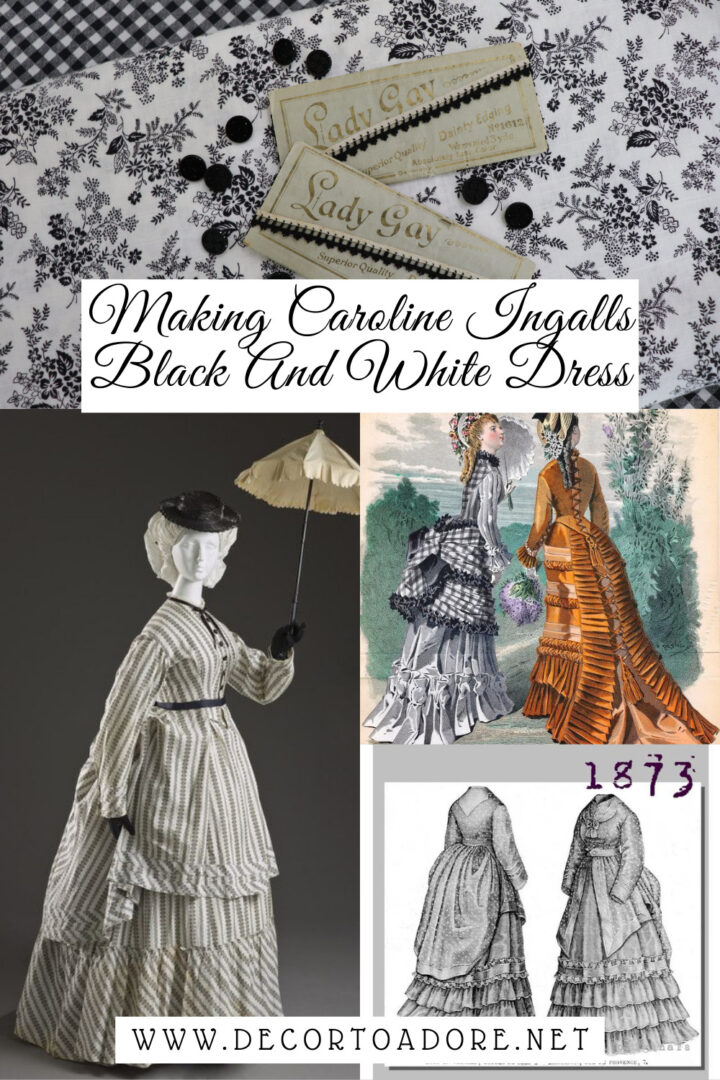
The Research
Believe it or not the actual sewing of the dress is the easy part. For me it is always the research that can take a considerable amount of time. I’ve been pinning dresses, fabrics and historical fashion plates to my 1870’s Pinterest board for a good four years. So where do I start?
Let’s begin with the dress description from On The Banks Of Plum Creek written by Laura Ingalls Wilder.
Then they stood and stared at Ma. She was perfectly beautiful in her new dress. It was black and white calico, a narrow stripe of white, then a wider stripe of black lines and white lines no wider than threads. Up the front it was buttoned with black buttons. And the skirt was pulled back and lifted up to puffs and shirrings behind. Crocheted lace edged the little stand-up collar. Crocheted lace spread out in a bow on Ma’s breast, and the gold breast pin held the collar and the bow. ~ Chapter 24, Going To Church

First Bustle Era
I next consider an approximate timeline.
Historians have set the story from 1874 to 1876 in Walnut Grove which is located in Redwood County, Minnesota. I believe it is probably 1875 as they have gone through a season of playing in the creek, seeing blue flags blooming, celebrating Christmas, spring arriving once more and the family then moves into the wonderful house.
Settling on 1875 I begin looking at fashion plates from various lady’s magazines such as Godey’s. This time period in fashion is known as the first or early bustle era (1869–1876).


The pink and white striped dress catches my eye. It features a button up front and a breast bow.

I then specifically look for black and white dresses. This was a very popular color combination.

This black and white dress is getting closer to what I imagine Ma’s dress might look like. The back of the overskirt, also known as the apron, has puffs and shirrings. The under skirt features just one bottom ruffle. As fabric was very expensive, Ma would probably not select a design with copious amounts of pleating and/or trim. She would also probably not have a lengthy train as it would not be practical.

From Fashion Plate To Reality
Historical fashion plates in the 1870s were what Paris and New York fashion shows are to us today. Their extravagance inspires. But designs are eventually watered down to what people can afford, what is practical and so forth. So I next start looking at carte de visites (small photographs taken in studios).



Extant Gowns
Examining historical gowns can also be immensely helpful.


We are getting closer to a style that a pioneer woman would perhaps have worn.
You can see how fashionable designs are interpreted to be more easily wearable for the everyday woman.
Making Caroline Ingalls Black And White Dress
It then comes down to selecting a pattern.
Ma was an accomplished seamstress. Her own mother, Charlotte Quiner, worked as a dressmaker and would have no doubt passed on those skills to her daughter.
Magazines of the day would provide pattern diagrams. A seamstress would use these images in conjunction with a pattern measuring system such as adjustable tailoring rulers to create patterns personalized to their own measurements.

You can find similar patterns on Etsy and eBay. Most of these patterns are recommended for very advanced seamstresses.

There are also numerous books available that share how to draft your own patterns.
This technique is also a very specialized skill for the experienced seamstress.

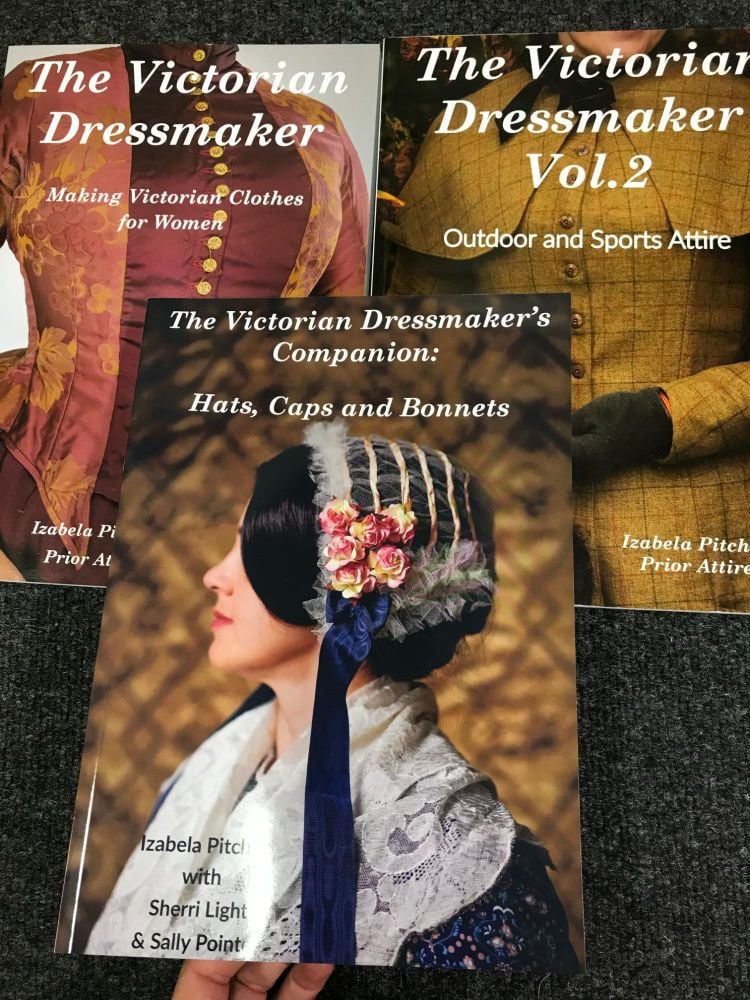

Black Snail Seaside Dress
In today’s video I go over some of the ready made patterns in my collection. They include Truly Victorian, Past Patterns, Simplicity and more. I discuss how I settled on the Black Snail Seaside Dress.
It features a button up front, a stand up collar as well as puffs and shirrings behind.
A few other historical costumers have created this dress. I looked at their posts and even a video from Pocket Full of Poseys who shares how to create a lovely plus sized version.
Fresh Frippery shares some cost saving measures in her fabulous post.
Kenna Sews has a three part series with fantastic construction details.
Based on research I knew that the pattern is possibly based on this historical extant.
The design details and shorter skirt were consistent with photographs and other extant dresses that supported my thoughts on Caroline wearing a simpler design that was still quite fashionable.
The Fabric
Ma’s dress fabric featured very thin black and white stripes. We have no true example of what the fabric pattern looked like.
As always, when I am creating a Little House inspired dress I often take liberties in the fabric selection. This is due to what is actually available as well as the cost. Fabric is still very expensive.
Three years ago I found some black and white cotton fabric at an estate sale. The pattern calls for 11 yards (10 meters) of fabric. I don’t have quite that much and I will supplement with an additional fabric in areas where the fabric is not seen, such as the lining.
The fabric measures 39″ (99cm) across from selvedge to selvedge (edge to edge). Fabric manufacturers moved to a standard 44-45″ (111-114 cm) width in the 1960s. So I know that this fabric is at least 50 years old and closer to the type of calico weave that Ma’s fabric would have been.
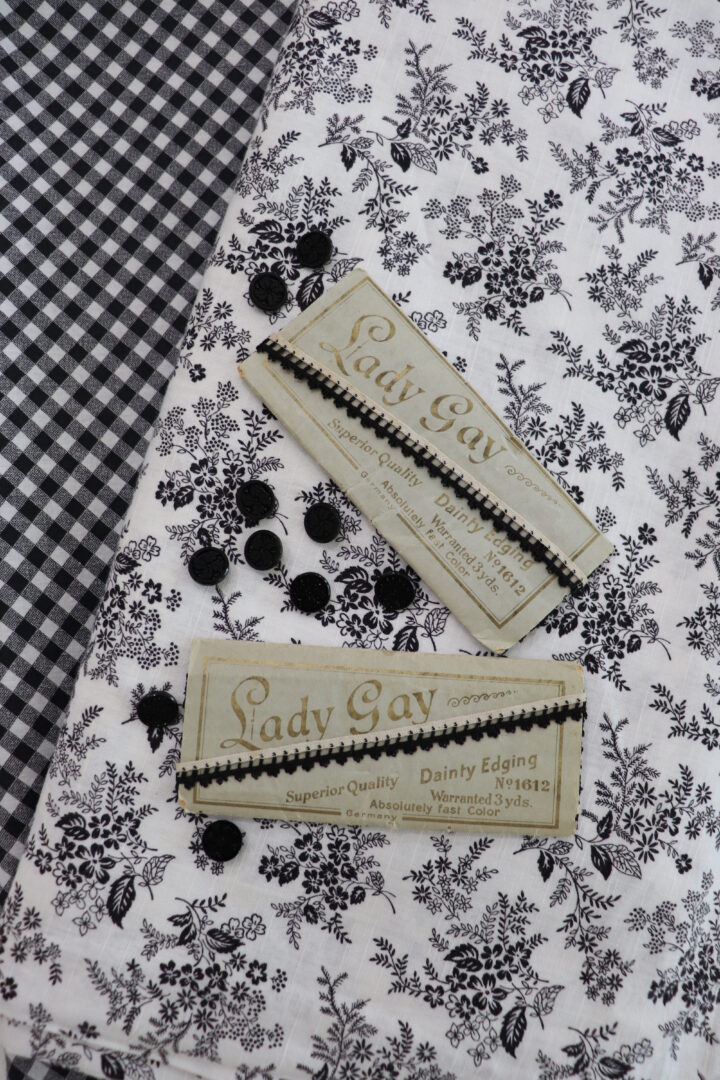
Antique Notions and a Video
As with all my historical fashions I try to incorporate antique touches into the design wherever I can. In this instance it will be in the black crocheted trim and black buttons.
I share these items and more in today’s video.
If you wish to view the video in a larger format just click on the black box in the lower left hand corner that says Watch on YouTube.
So now, I am ready to make the muslin mockup. Once I achieve a good fit I will then cut in to my precious fabric. I am estimating that this dress will take around 40 hours to create.
Fingers crossed I’ll be back in two weeks with the reveal.
Laura
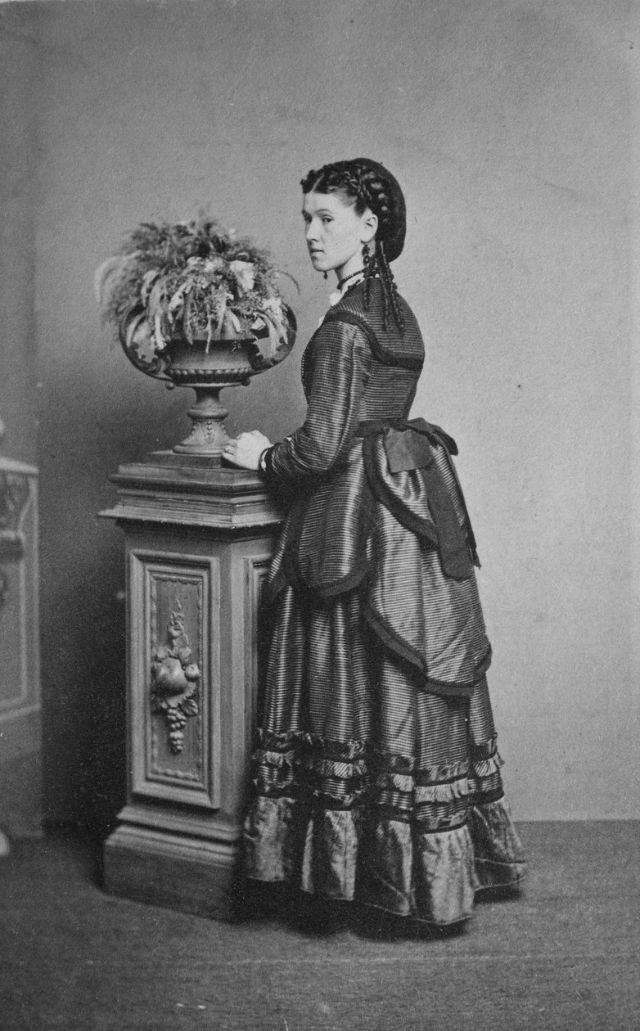



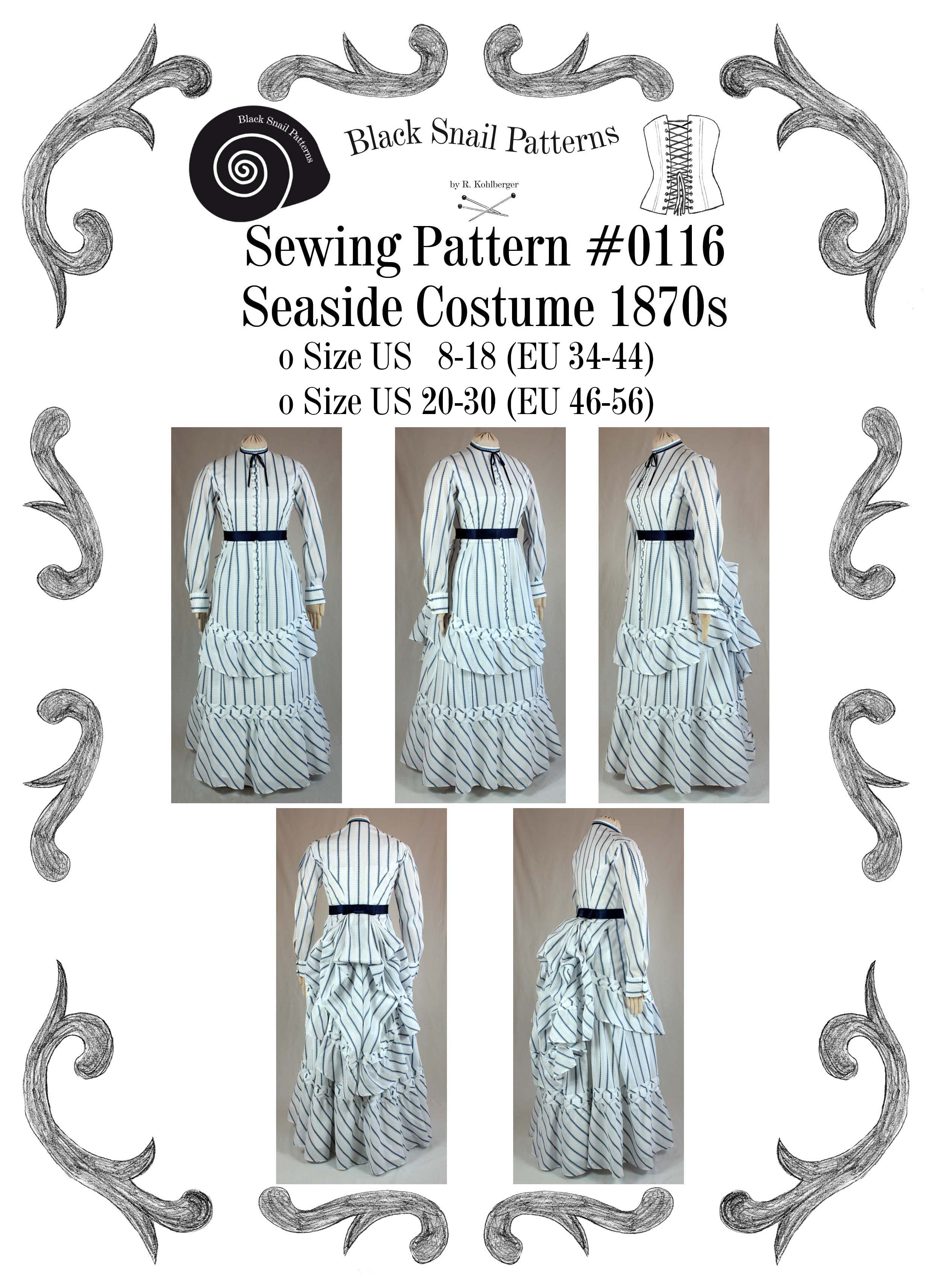

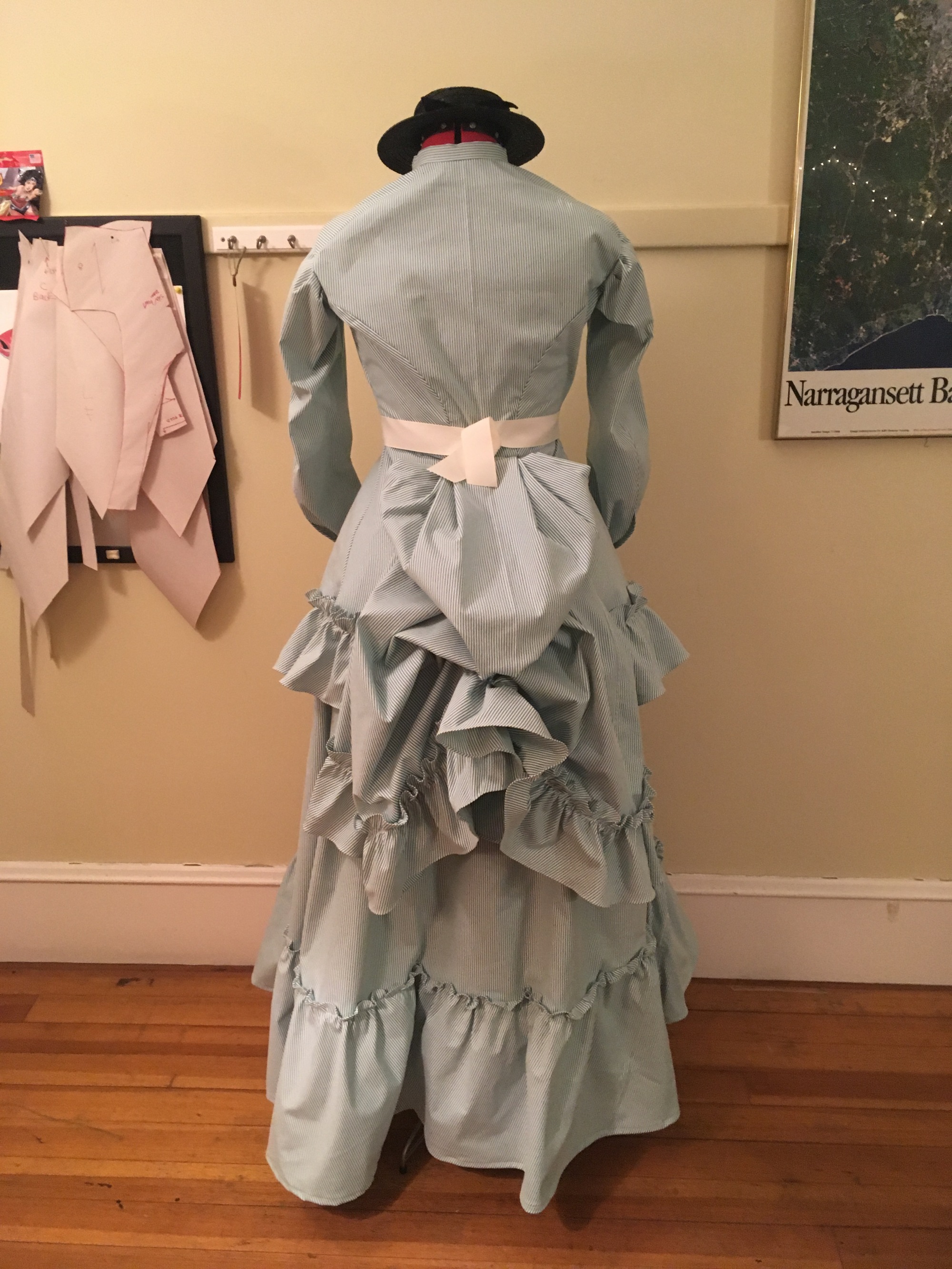


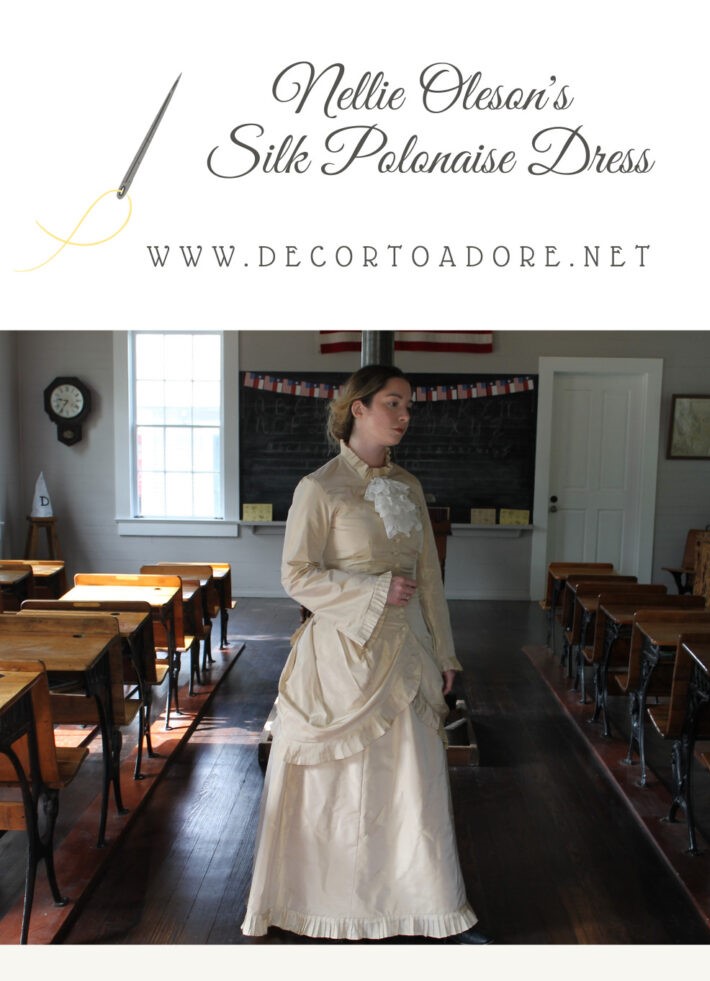

I’ m loving this story and I can’t wait to see the finished garment. It is always so special to see you working on projects that incorporate your family history. Ma Ingalls would be very proud .
I can’t wait to see your finished project! So much research and work, but I know it will be worth it! Thanks for sharing!